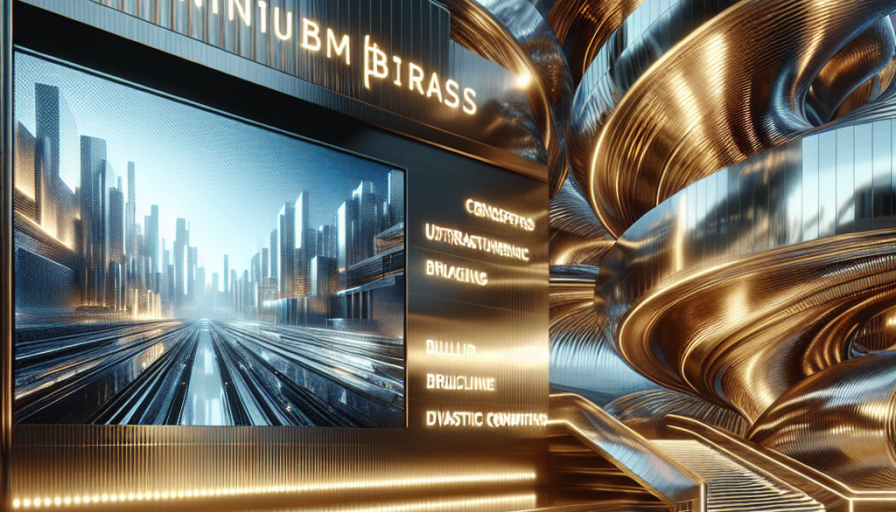
Aluminium Brass: The Future of Industrial and Architectural Design
In the ever-evolving world of industrial and architectural design, materials play a pivotal role. They not only determine the durability and functionality of a product or structure but also contribute to its aesthetic appeal. In recent years, aluminium brass has emerged as a game-changer in this field, promising a bright future for designers and manufacturers alike.
One of the key advantages of aluminium brass is its unique combination of properties. It offers the corrosion resistance of brass along with the lightweight and high strength characteristics of aluminium. This makes it an ideal choice for a wide range of applications, from aerospace components to marine fittings and architectural elements.
When it comes to industrial design, aluminium brass stands out for its versatility. Its malleability allows for intricate shaping and detailing, opening up endless possibilities for creative expression. From intricate sculptures to functional machinery parts, designers can push the boundaries of their imagination with this exceptional material.
Architectural design also benefits greatly from the use of aluminium brass. Its durability and resistance to corrosion make it perfect for outdoor structures, such as facades and decorative elements. The material's ability to withstand harsh weather conditions ensures longevity and minimal maintenance, making it an attractive option for architects and building owners.
Moreover, aluminium brass offers a distinct visual appeal. Its warm golden hue adds a touch of elegance and sophistication to any design. Whether used in interior spaces or exterior facades, it creates a sense of luxury and modernity. With the ability to be polished or brushed, aluminium brass allows designers to achieve the desired aesthetic effect effortlessly.
The environmental aspect is another significant advantage of aluminium brass. As a recyclable material, it aligns with the growing demand for sustainable design practices. By choosing aluminium brass, designers can contribute to reducing waste and carbon footprint, making it a responsible choice for the future.
In conclusion, aluminium brass is undoubtedly the future of industrial and architectural design. Its unique combination of properties, versatility, visual appeal, and environmental benefits make it a material of choice for designers and manufacturers. As the world continues to prioritize efficiency, sustainability, and aesthetic innovation, aluminium brass will undoubtedly play a crucial role in shaping the future of design.…